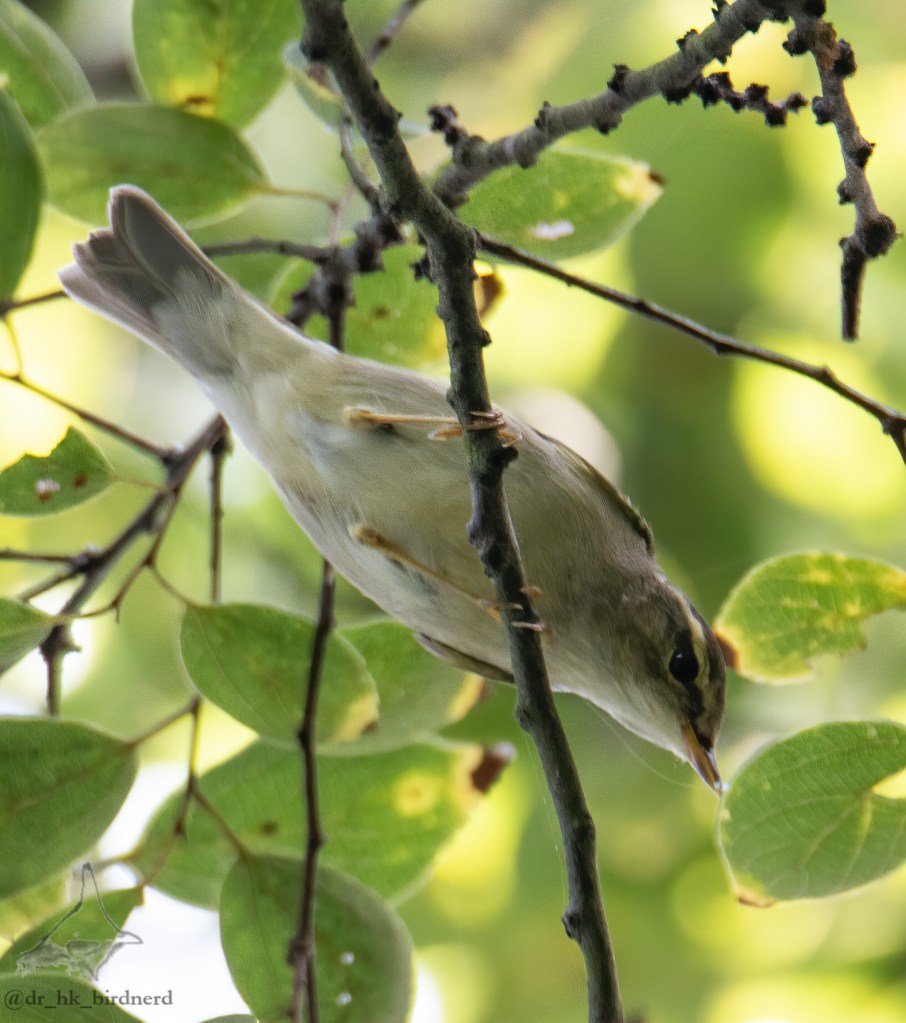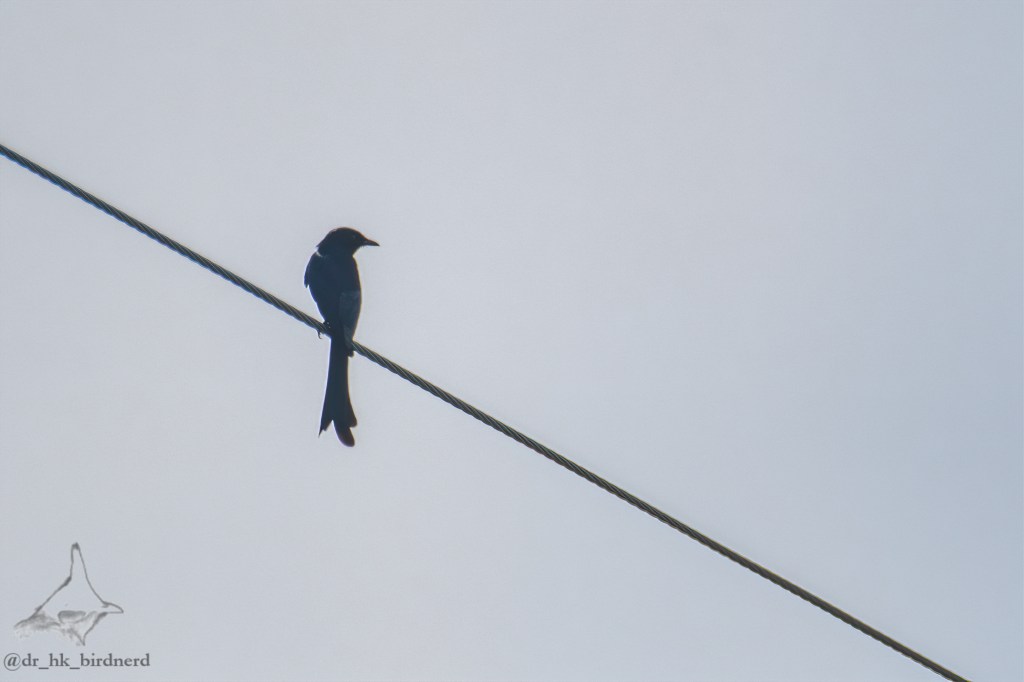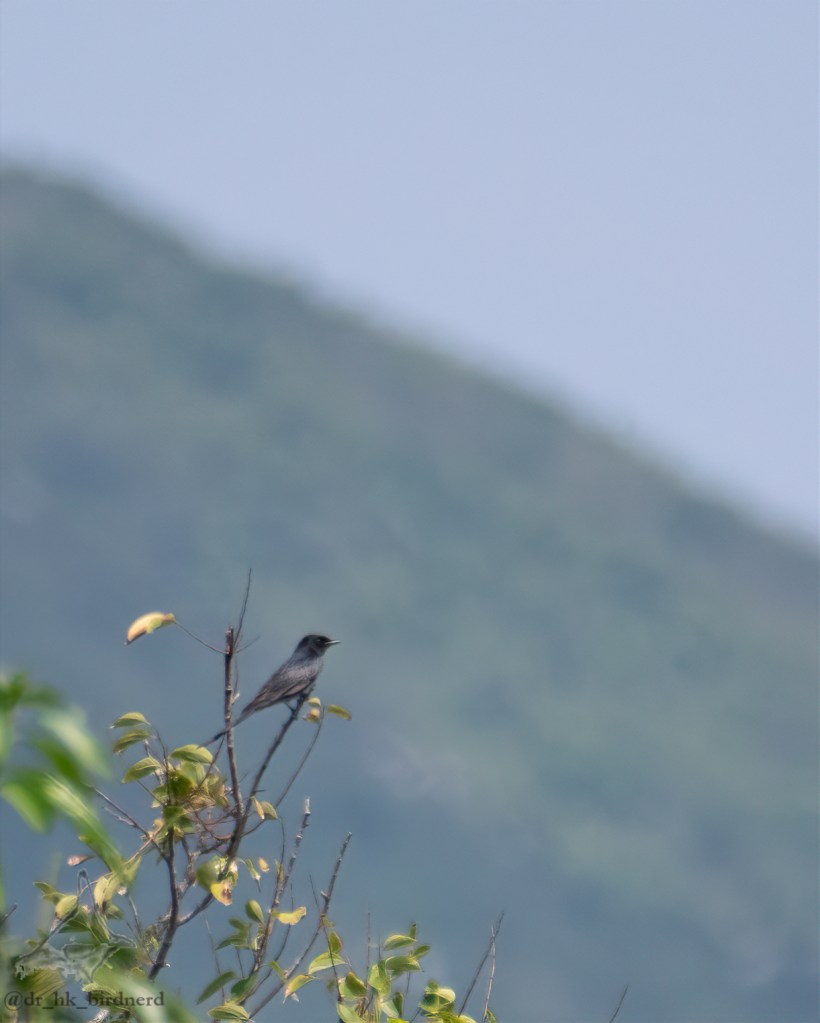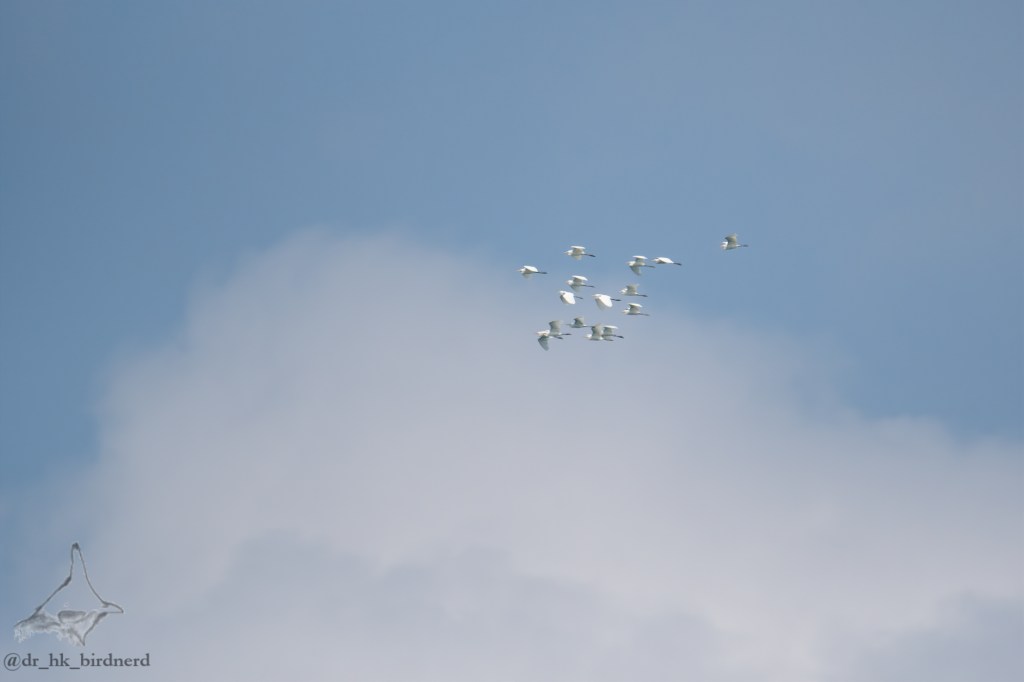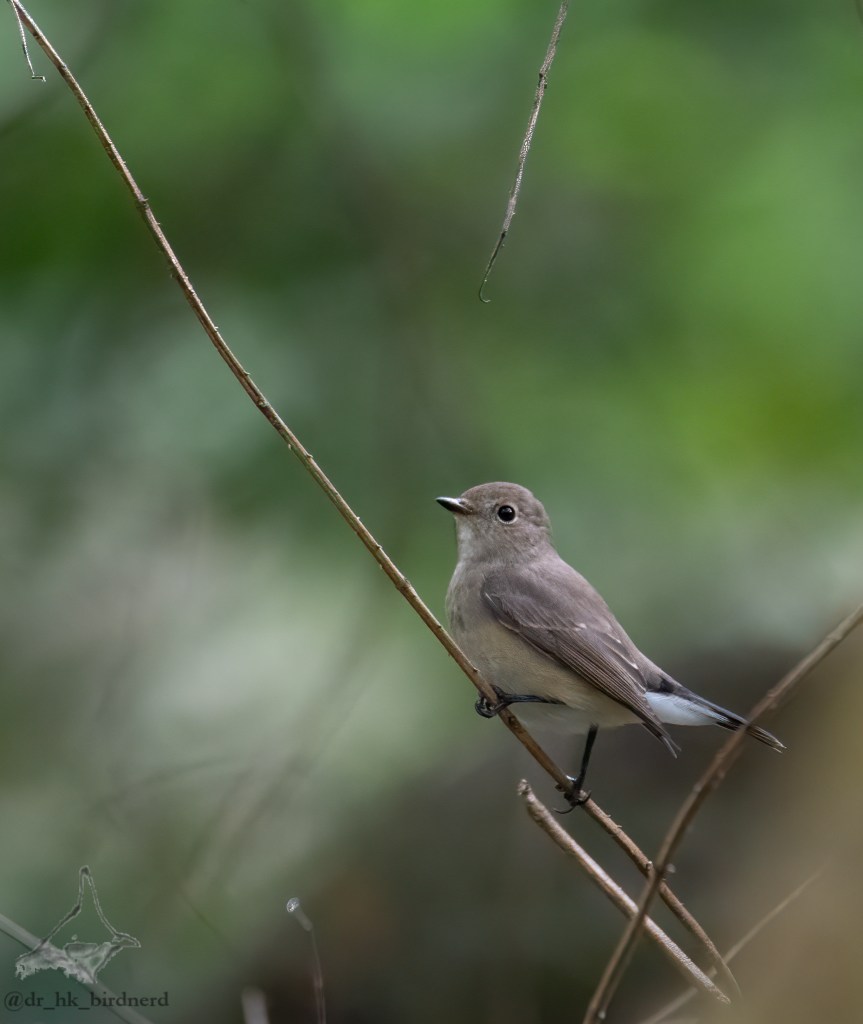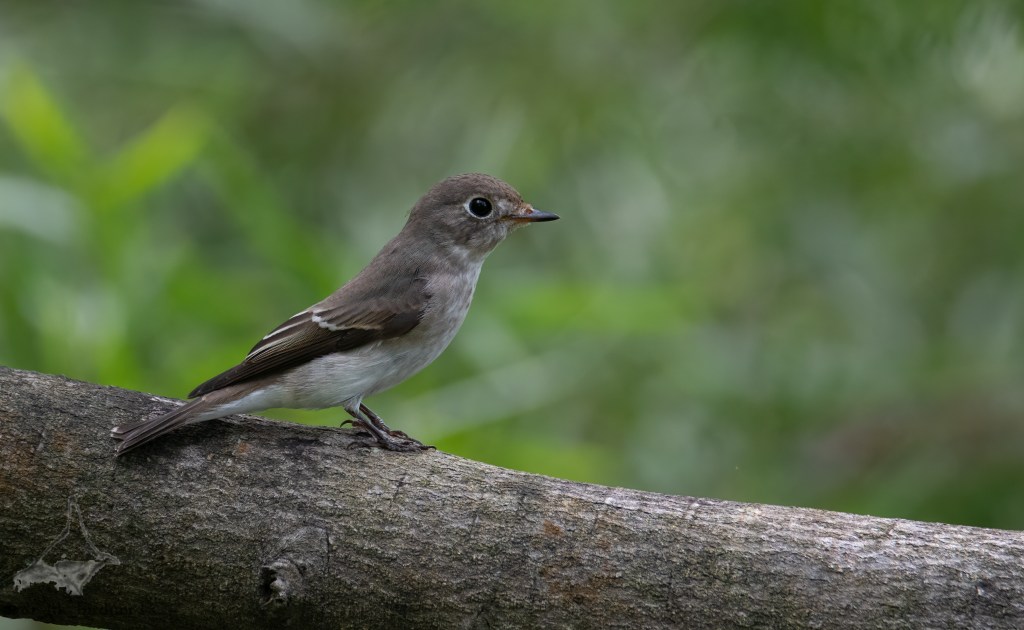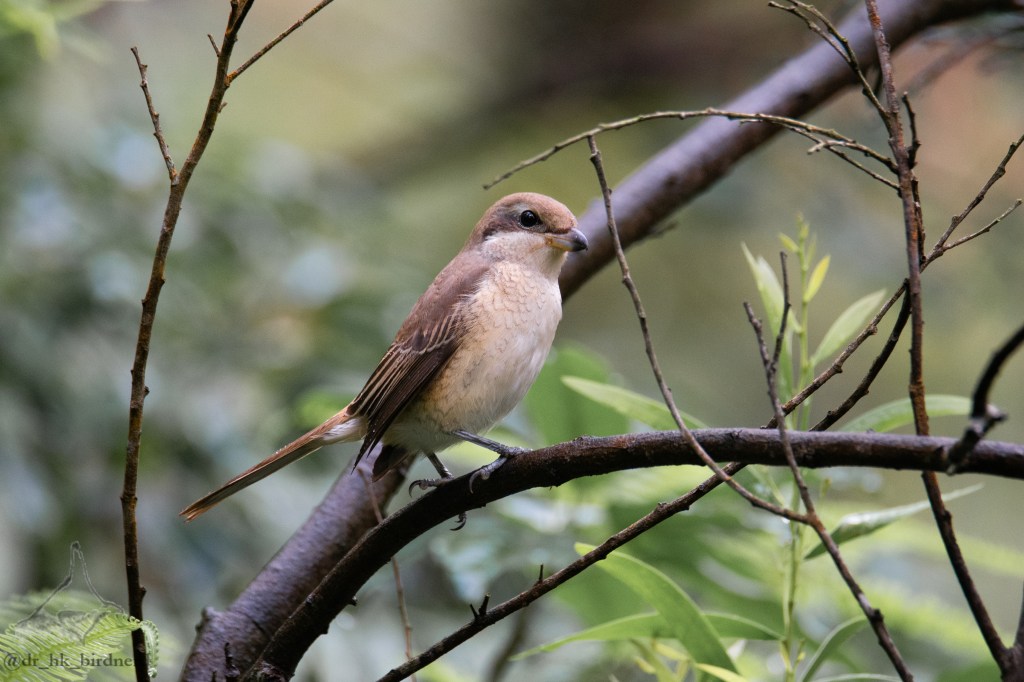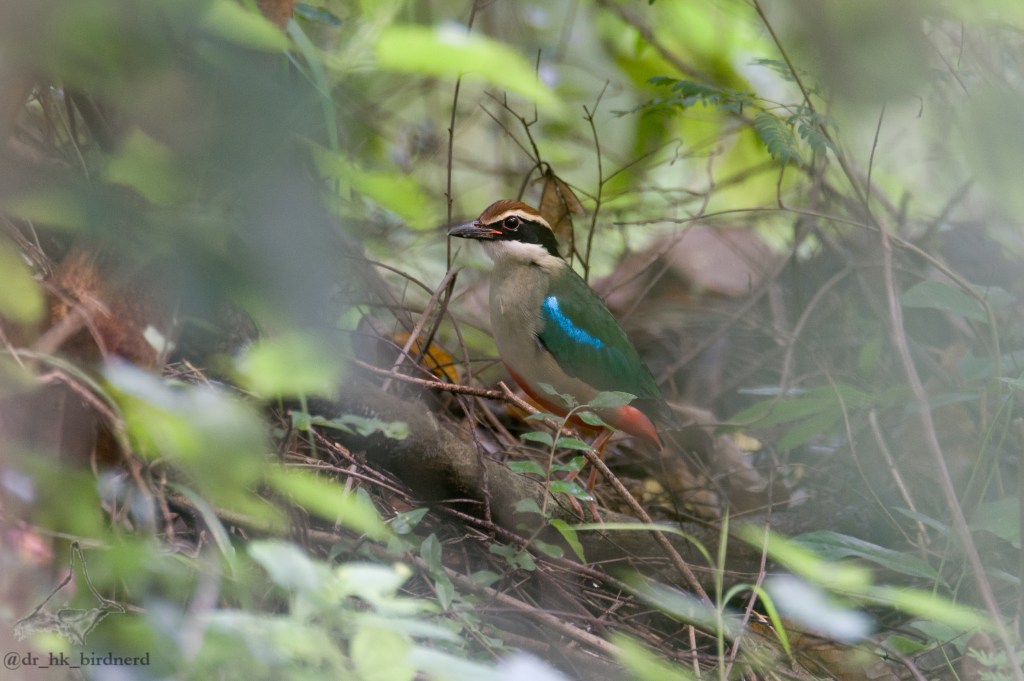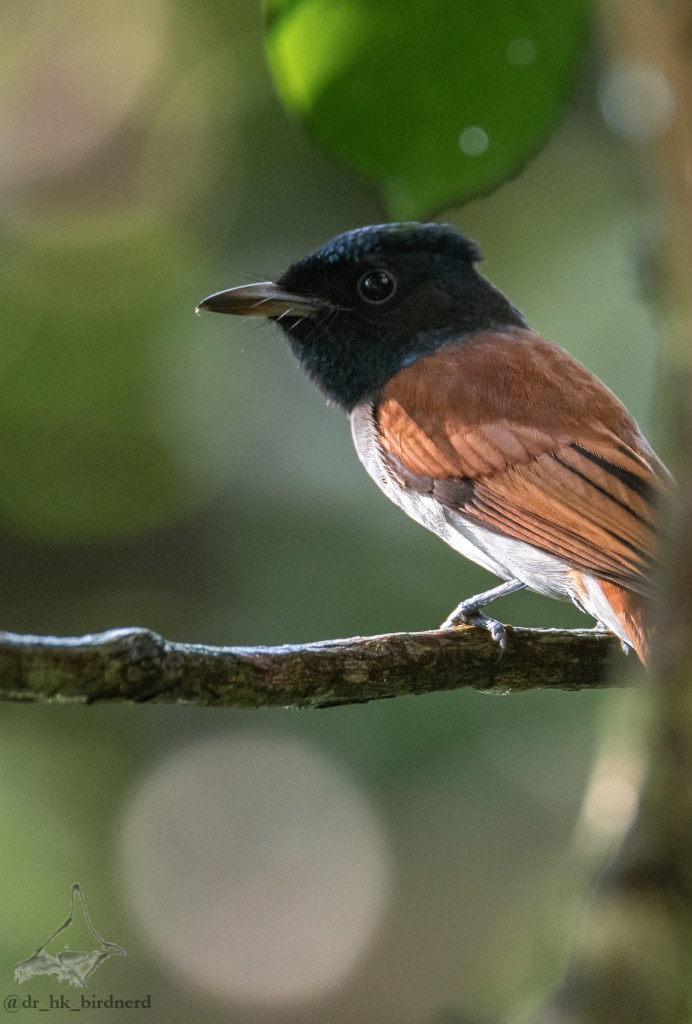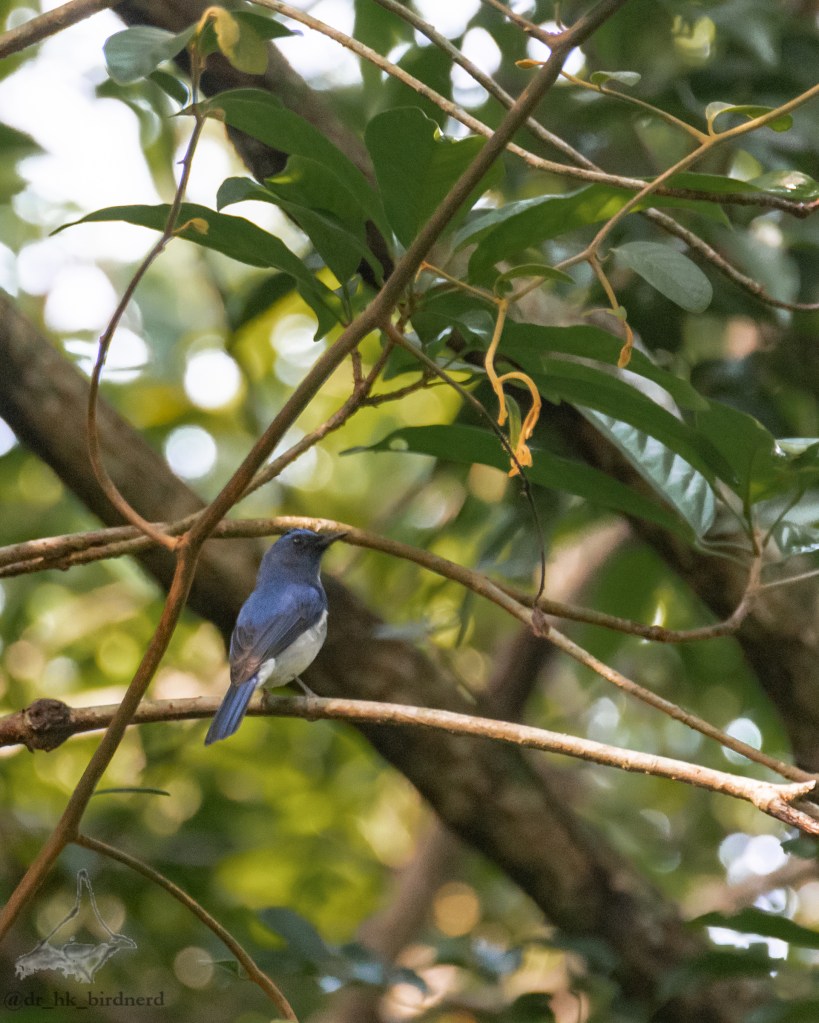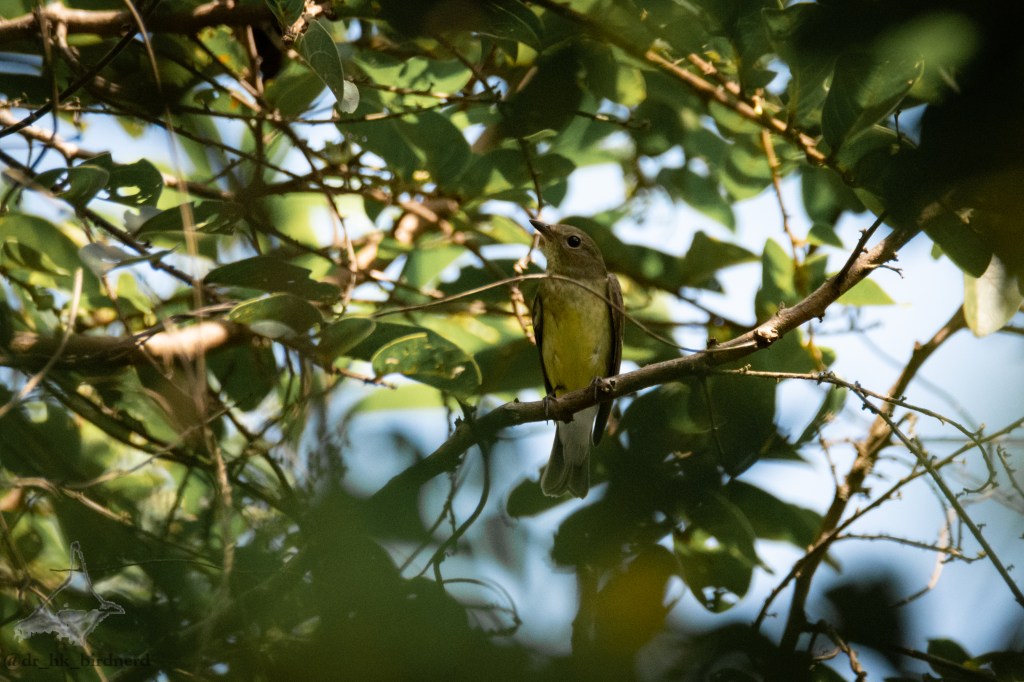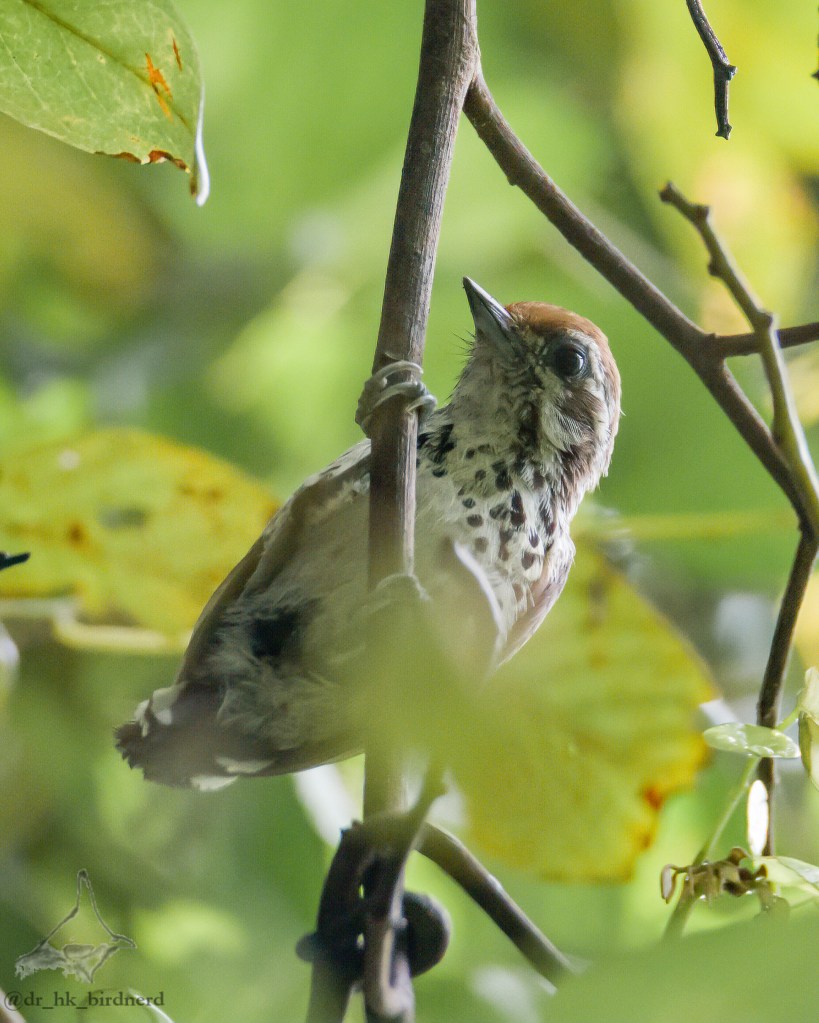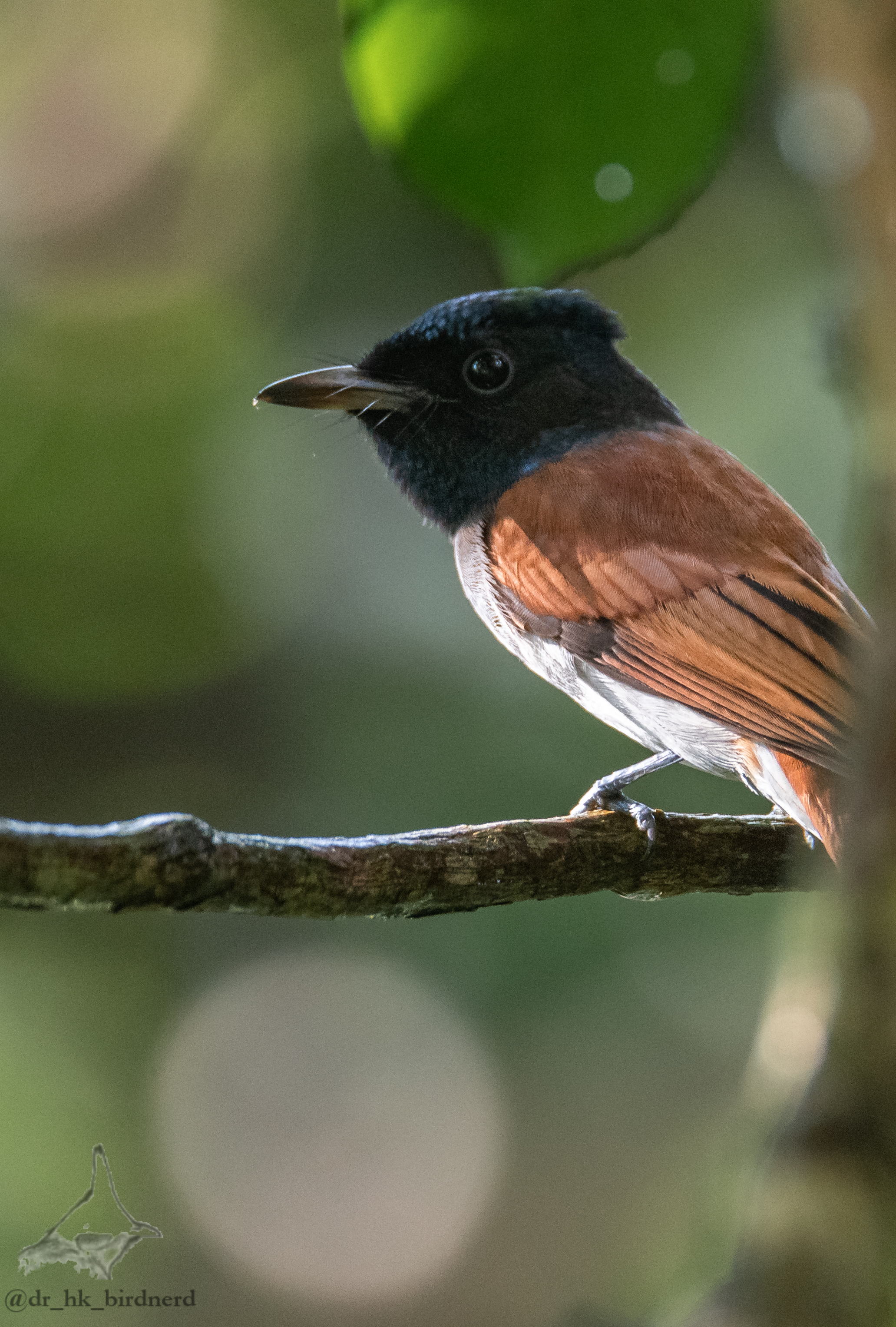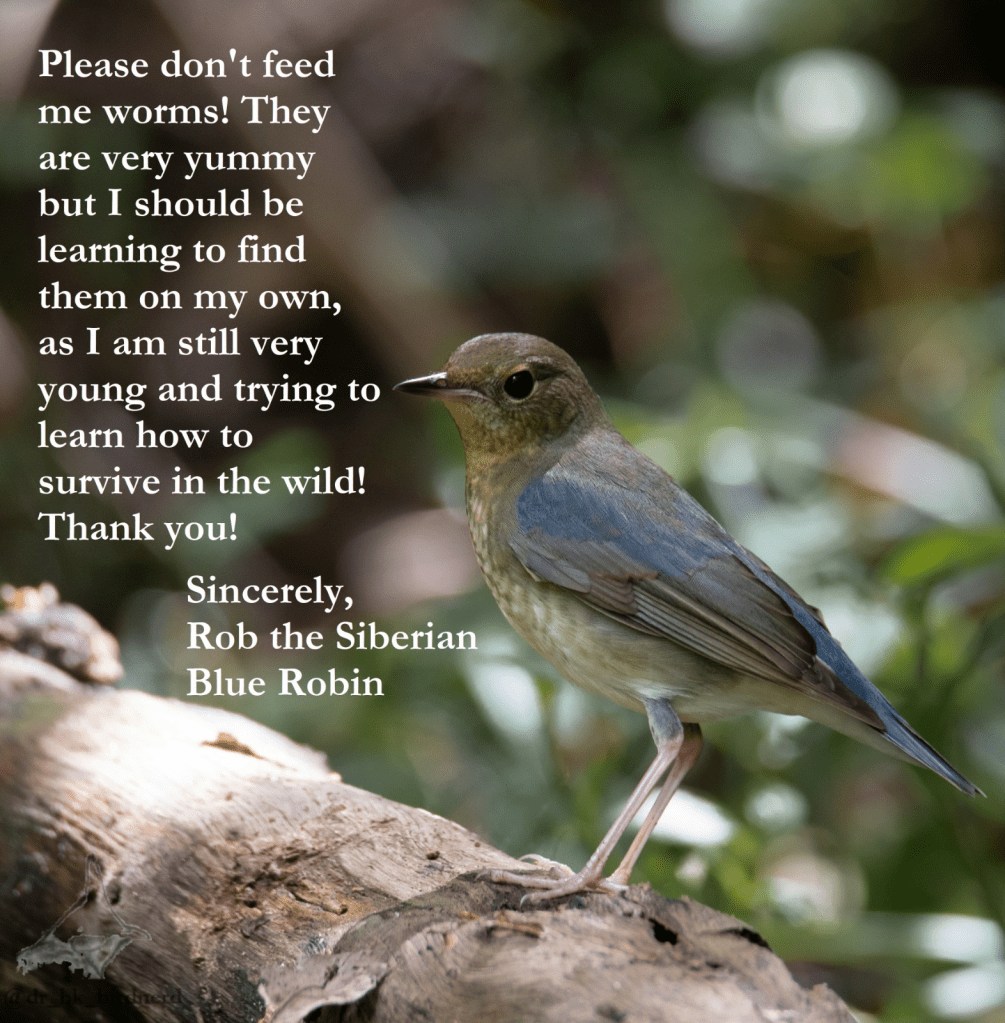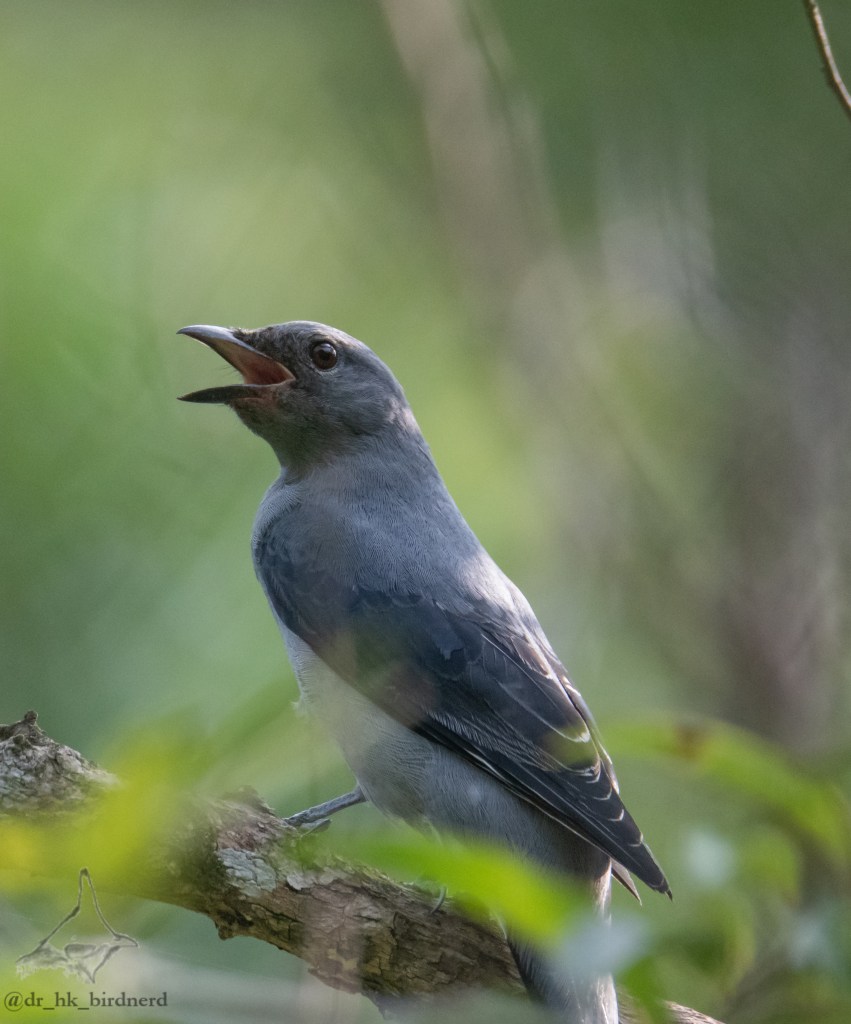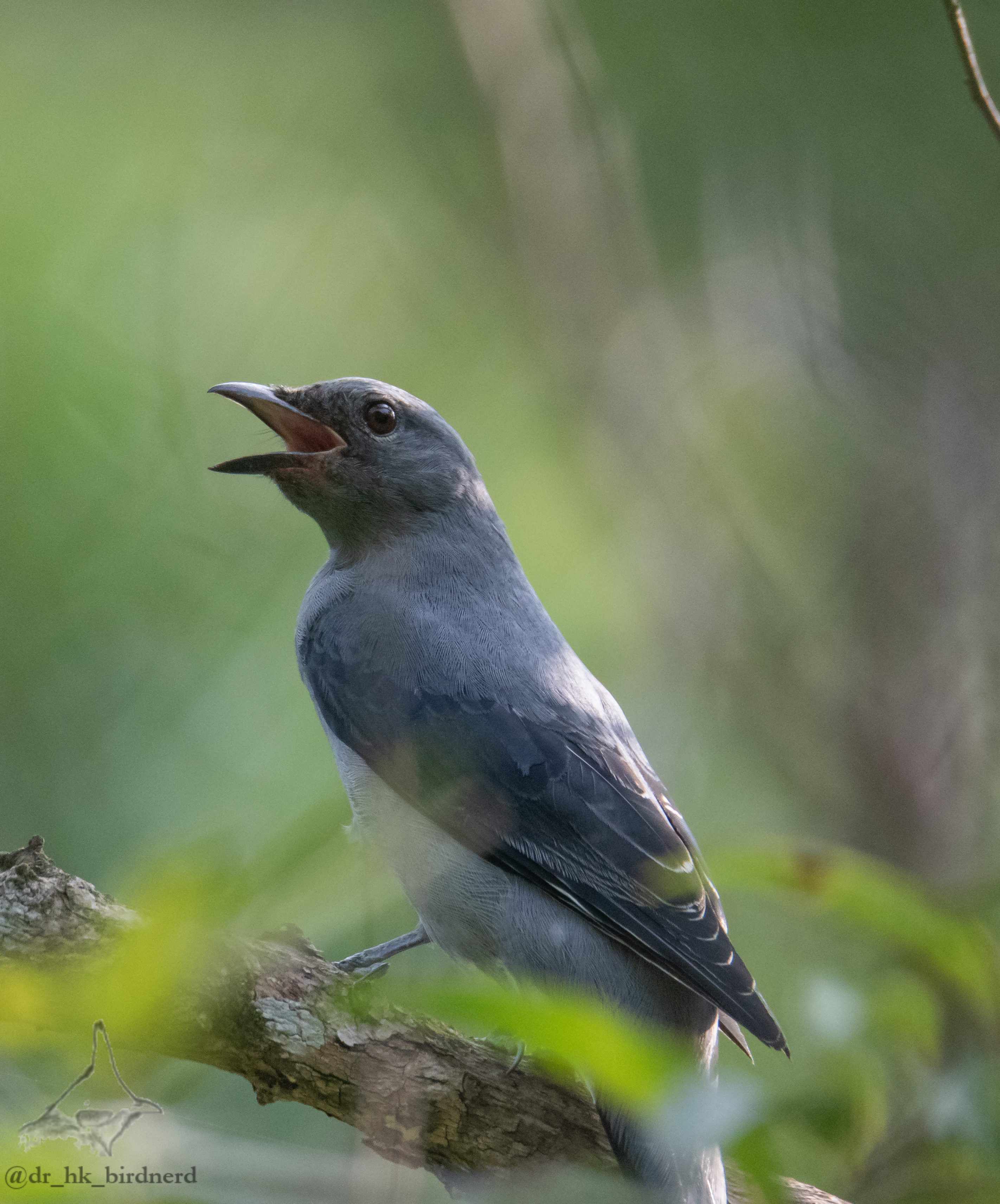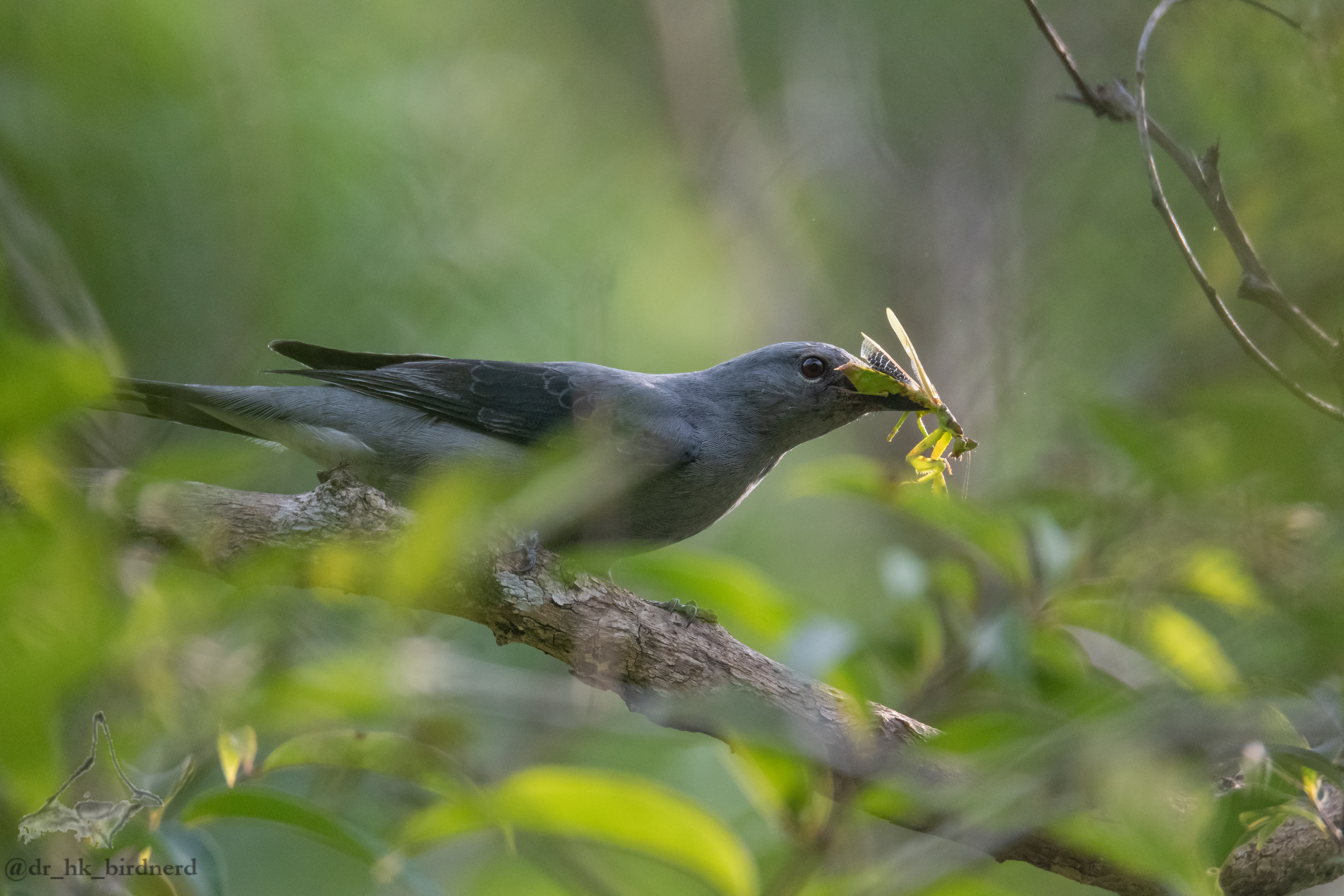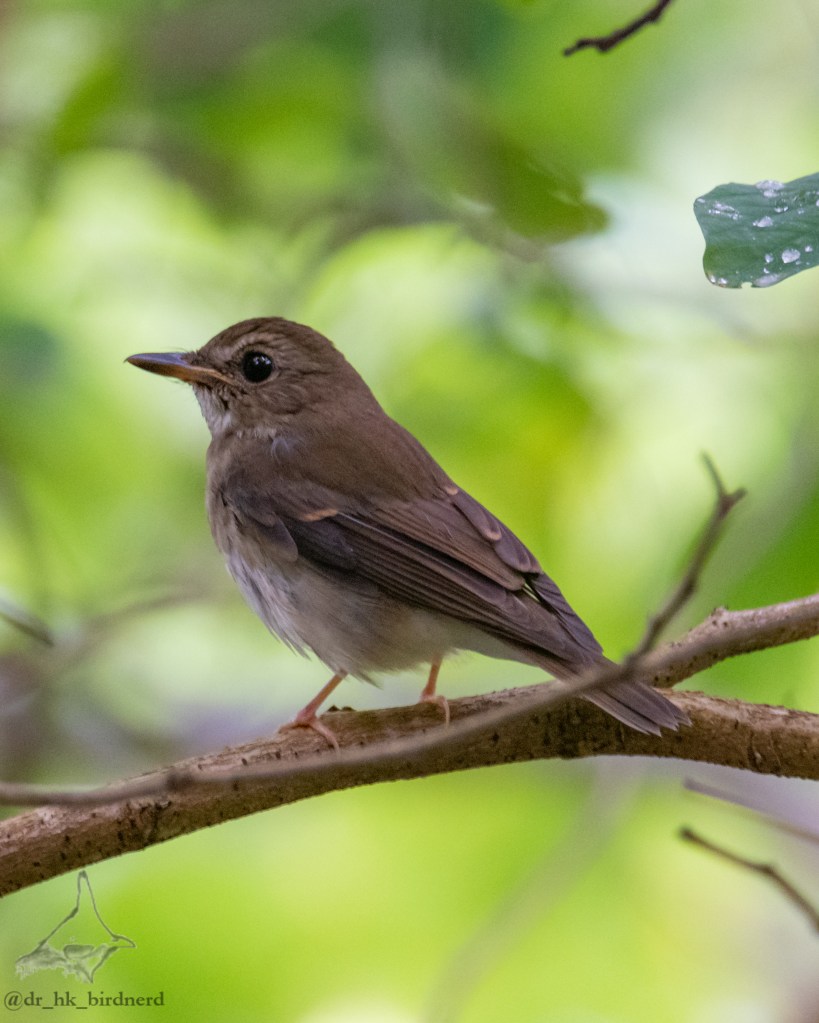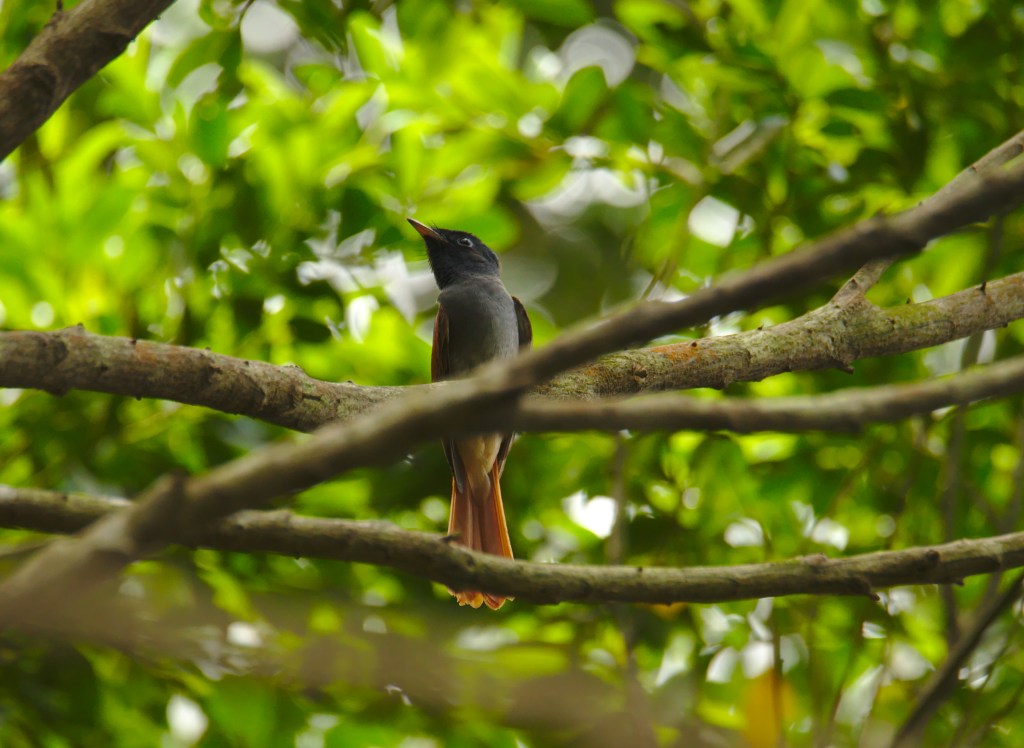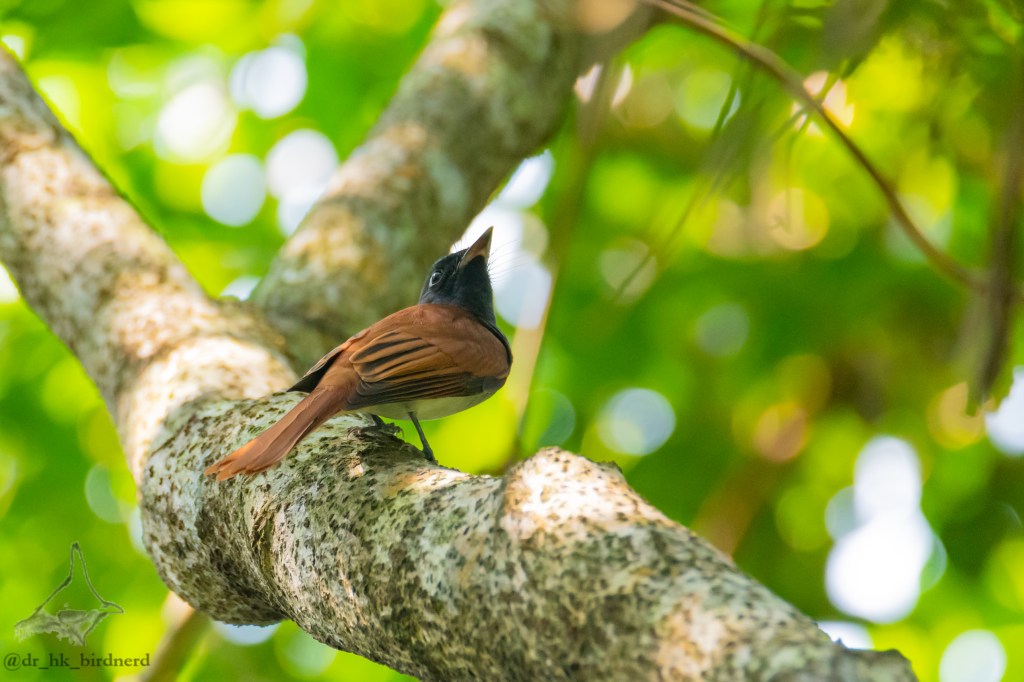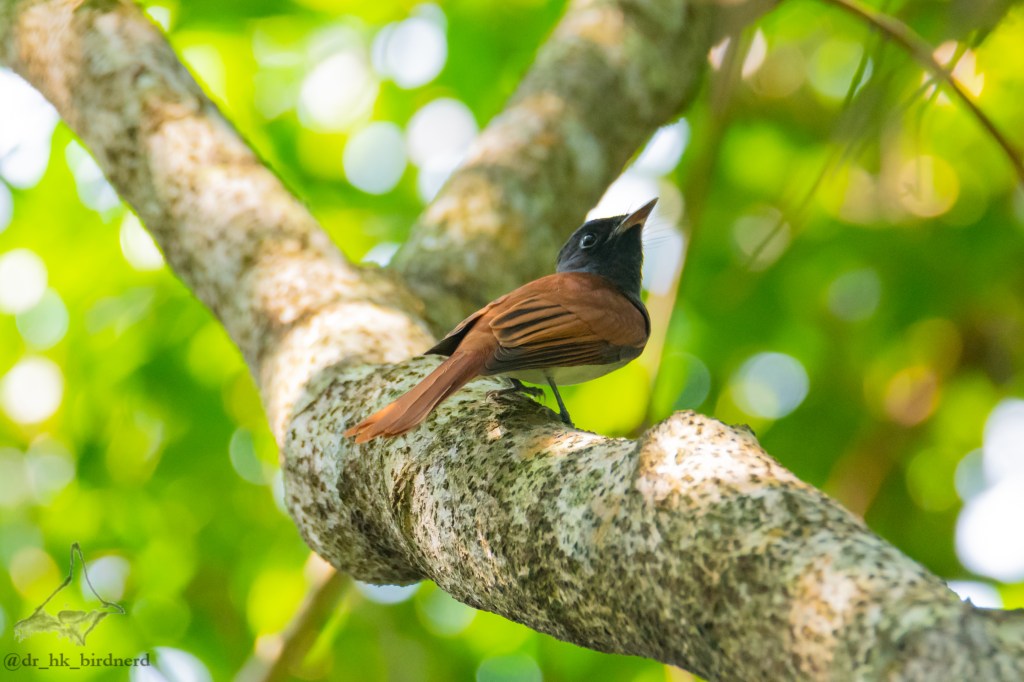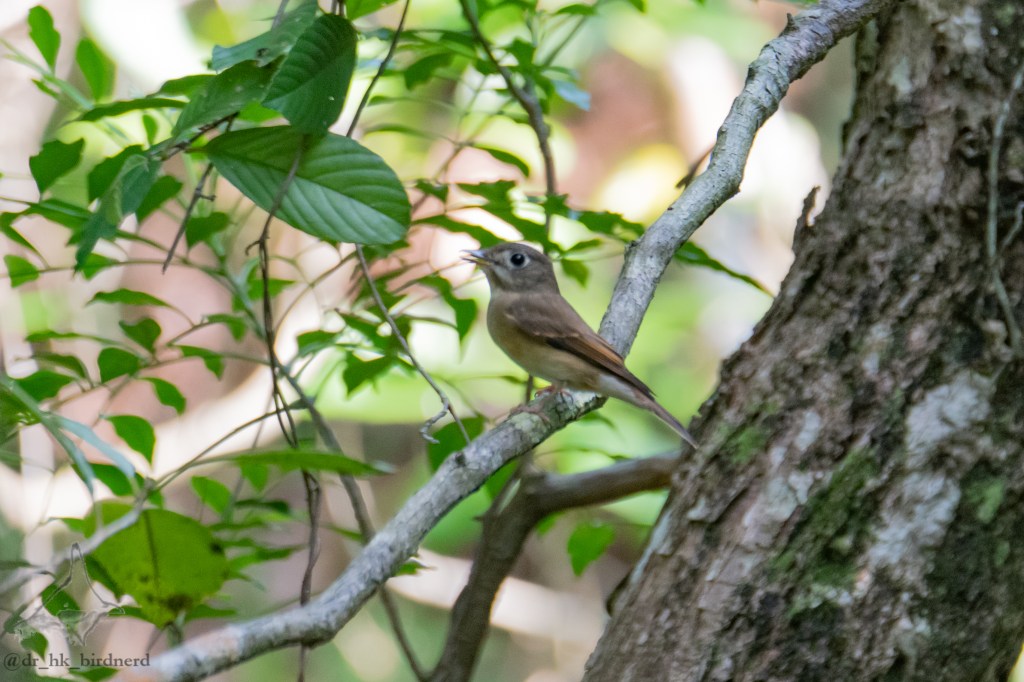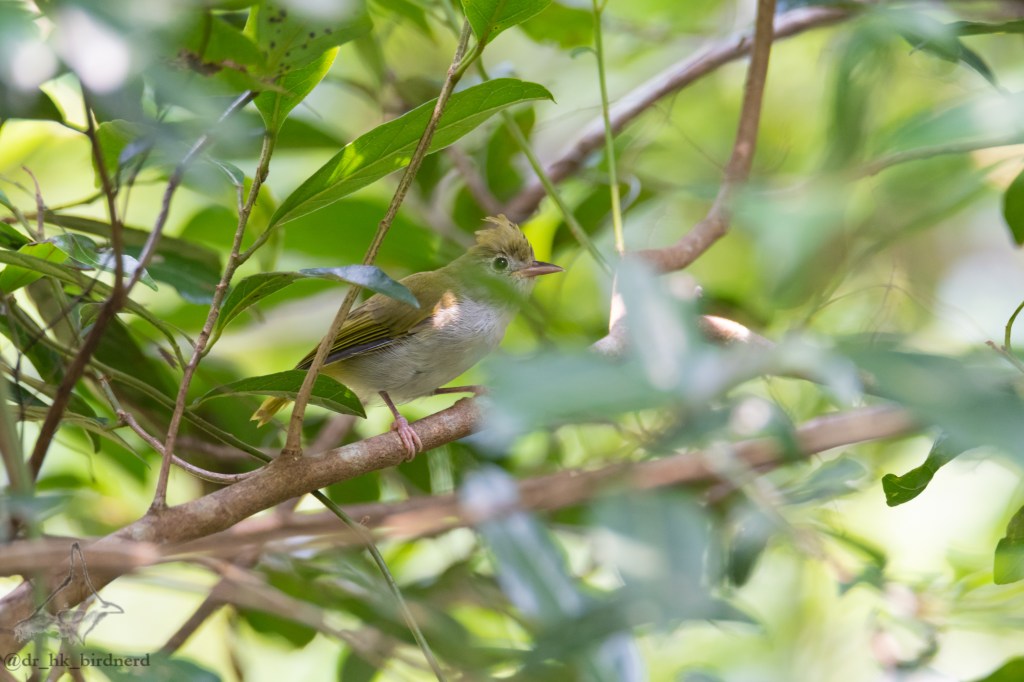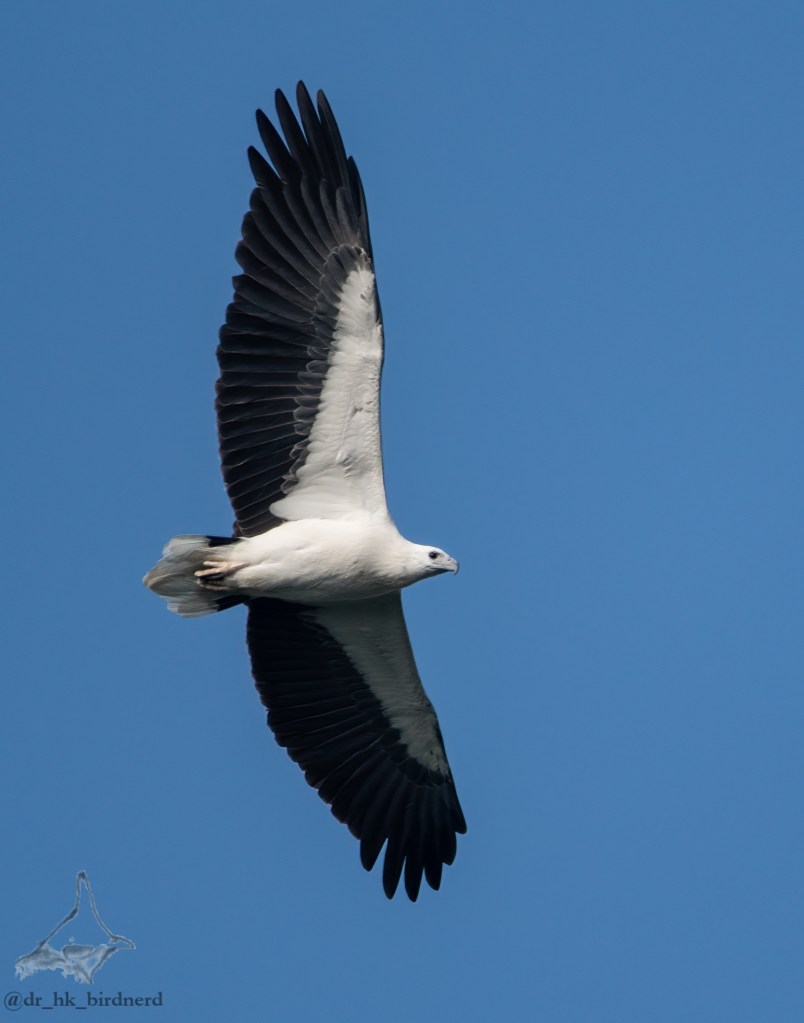
Mount Davis is probably the easiest spot for me to visit these days, second only to Lung Fu Shan. I dislike going there, however, given the foot traffic and, well, the truly oppressive amount of stairs. The walk up to the top of Mt Davis, by contrast, is more gradual. It’s a pretty tight spot, however, so you may struggle to find good stuff on the edge of the field at the top like buntings and chats during the autumn if some merrymakers are up there.
By the time I got up there, two separate groups were taking wedding photos in the field, and a few hiking groups also showed up, so at one point there were nearly 30 people up there—not great for birds. However, I did manage to spot an Asian brown flycatcher, as well as an Arctic warbler, two common migrants this time of year.

More impressive, however, was a flyover by a white-bellied sea eagle. I’ve only seen this rather impressive bird in Hong Kong once before, soaring very high up during one of my trips to Po Toi. Today, however, I managed to get a proper shot as it was comparatively low while I was in the field at the top of the hill.

Additionally, I managed to see a Chinese sparrowhawk, a first for me. These raptors are currently migrating through Hong Kong and can be observed primarily in the open countryside or island hills. Perhaps someday I’ll be able to get a good capture of it flying lower.







